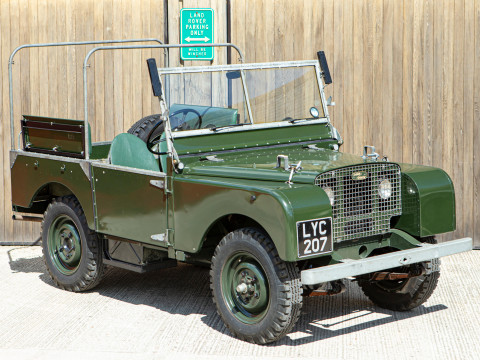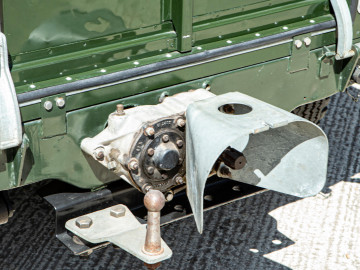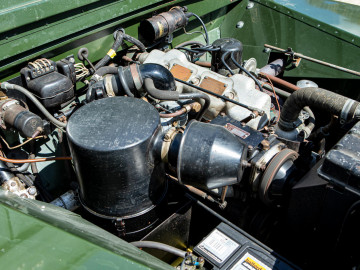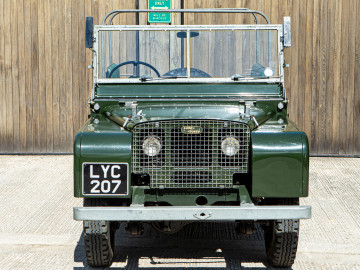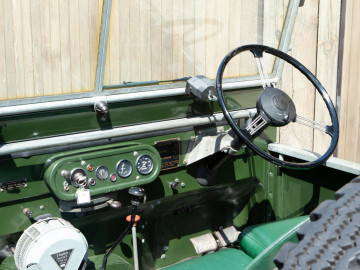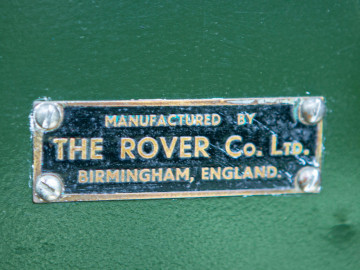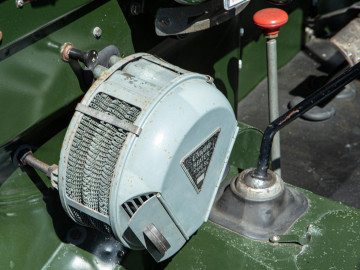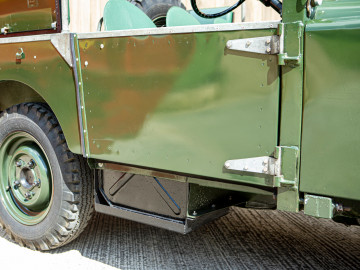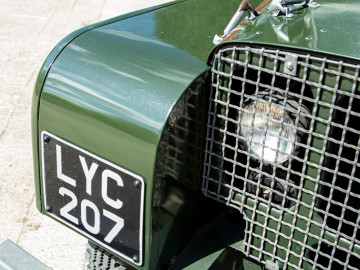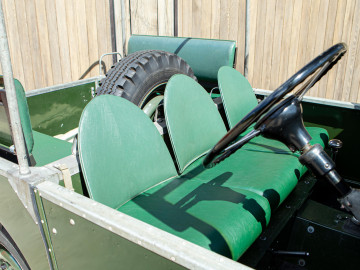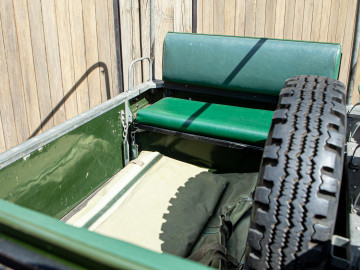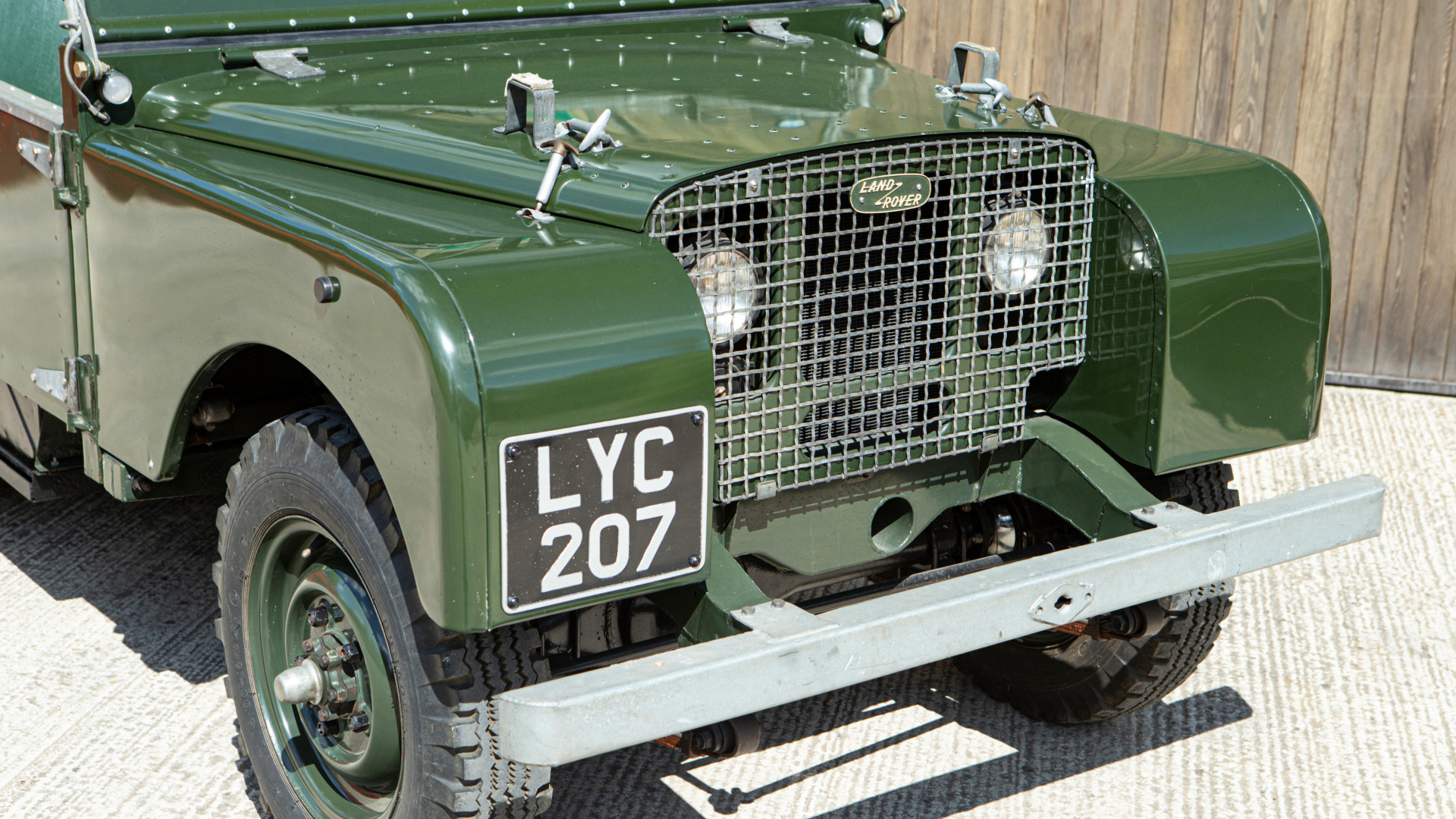
The start of the story.
Series I: 80" Canvas Top (1949)
This is a fine example of one of the very earliest Series I Land Rovers, manufactured within a year of the first Land Rover delivery. It stands as a marvellous example of how a vehicle can look if it is cared for and loved throughout its long life of over 70 years. It exhibits all the hallmarks that set this 'classic amongst classics' apart from the crowd. Headlights behind the Grill, traficators (semaphore indicator arms) mounted on the windscreen frame and next to nothing by way of a dashboard. The vehicle is void of any creature comforts. But its raison d'être was its off-road ability rather than its fashion credentials. And all for the princely showroom price of £540.
The recent faithful restoration of bodywork and engine allows this exhibit to present a picture of how it and its contemporaries would have looked as they left the showroom. Classic Bronze Green paint, spade shaped seat backs and a renowned optional attachment which links the vehicle to its agricultural roots. 'LYC' sports a rear PTO (power take-off) attachment which allows drive to be transferred through a flywheel to remote equipment such as a saw bench. Most importantly all the mechanics, such as they are on this most rudimentary of Land Rovers, are still in full working order. So we can not only enjoy the aesthetics of this fine classic but, as it should be, we can also experience 'LYC' from behind the wheel.
More InfoThis Series I is little changed from the original models driven to the Amsterdam Motor Show in April 1948 to introduce the Land Rover project to the world. This inexpensive no frills utility vehicle was a revolutionary introduction tilted towards the agricultural market. It's rudimentary finish reflects its incredibly short development time and its intended role as a 'stop-gap' project to help the Rover Motor Company's recovery out of the trauma of the war years. Within months it was outselling Rover's cars ... and the rest is history.
This model achieved its modest list price because the Land Rover was classed as an agricultural vehicle whereby it dodged purchase taxes. But even a cursory look will disclose that this price also reflects that it was basic in the extreme; straight body panels, barely a dash board, only one wiper with a manual motor, no heater, windows that are removed rather than wound down and those semaphore traficator arms that sit uncomfortably either side of the windscreen. Land Rover explained the positioning of the headlights BEHIND the grill as a means of giving the lenses further protection. But in interviews during more recent years members of the development team attribute this to being another cost saving measure. This treatment avoided incorporating chrome trim or a similar device to frame the headlight fitting.
The mechanics were similarly basic. The power unit was taken from Rover's existing engine stock. The build was by hand, bolted to a simple ladder chassis carrying leaf spring suspension. Whether planned or coincidental, in this way Land Rover hit upon what became its universally acclaimed design advantage - reliable uncomplicated mechanics that were easy to maintain anywhere in the world by anyone with three socket spanners, a screwdriver and an oily rag. Its one concession to sophistication came in its permanent 4 x 4 drive train (which remained throughout the life of the brand) and potentially three PTO's which could be brought into play for those looking to use the Land Rover to drive ancillary equipment, one of which our car enjoys.
OYC is, of course, the grand 'Old Lady' of our collection. Land Rovers rarely come older! She is much loved and cared for. She represents a vision of the most fundamental revolution in UK automotive history since the introduction of the pneumatic tyre. From this one model mushroomed the entire 4 x 4 , SUV and utility vehicle market segments worldwide. However, as one so often sees in life, it's strengths became its eventual downfall. Loyalties (or perhaps simply complacency) of buyers and its manufacturer alike prevented it keeping pace with the changing world around it. Nevertheless it remained at the top of the pile for just short of 70 years until the final Defender, as it was then termed, ran off the line at the Solihull factory. But the name and spirit lives on. The traditional Land Rover passed its DNA to successor brands (the Range Rover, Defender, Freelander and New Defender) that between them have remained unquestionably the epitome of the sector.
Part of:
Series I
The Collection
Vehicle Owner: Land Rover Heritage Collection
Want to help take a look at our get involved pages.
Know something about this vehicle contact us.
